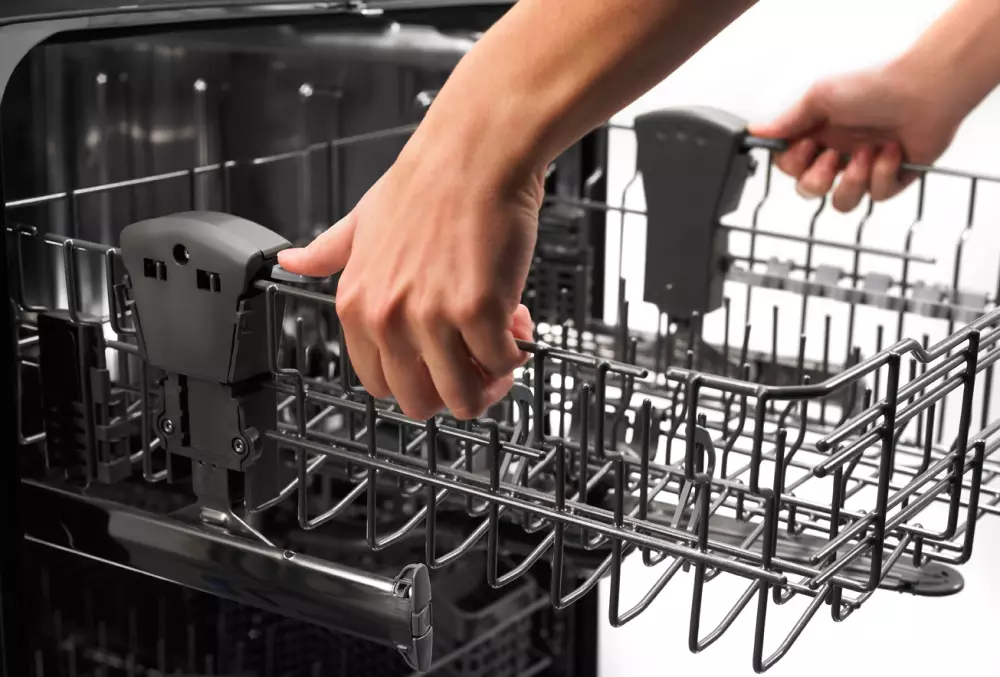How to Clean a Washing Machine (Inside and Outside): 9 Easy Steps for Clean Clothes and Sheets
If you've ever had a smelly washing machine, you know what a pain it can be. Whether you're using it to clean your clothes or sheets, the smell is almost unbearable, and the clothes never seem to get clean. That's why we're here today to help you learn how to clean your washing machine.
It's time to learn to ensure your clothes are clean and your sheets are fresh. We'll take you through some easy steps to will help you get rid of any smell and make sure your life will be easier.
Are your clothes and sheets dingy and dirty? Tired of washing your laundry and having it come out the same way? We've got some tips for you on how to clean a washing machine so that your clothes and sheets come out fresh, clean, and smell great.
And when they are, a professional cleaning service will be happy to fold your laundry for you, especially when you don't have extra time.
Washing machines work hard for us. They're churning through all kinds of dirt, germs, and grime, so we want them to be as clean as possible. But sometimes, we need to remember about our beloved washers or need to learn how to clean them inside or outside correctly.
Cleaning your washing machine is important to ensure that you're keeping your sheets and clothing clean. The last thing you want is to be sleeping on dirty sheets or walking around in dirty clothes. That's why it's important to keep your washing machines clean.
So here's a quick guide on how to clean a washing machine in just 9 easy steps!
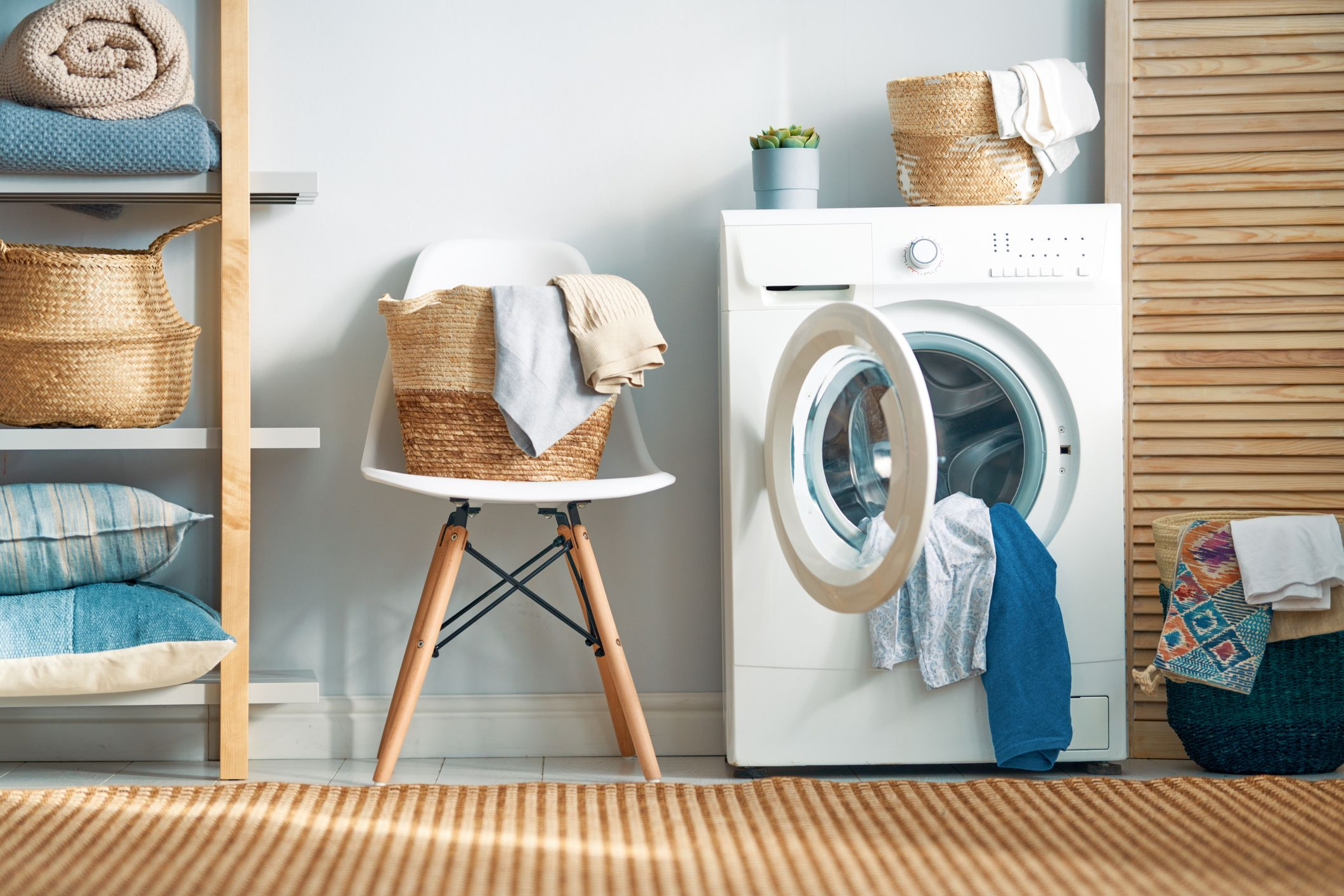
What You'll Need
Instructions
1. Wash the door seals and gaskets
To clean the gasket cavities, soak a microfiber cloth in vinegar or hydrogen peroxide and place them on the gaskets. Keep the sheets in place for an hour to let the white vinegar or peroxide break down the grease or mold and sanitize the area. Cleaning the gaskets and door seals with a toothbrush will help eliminate any residue that may have built up.
2. Set the washing machine
Once you've finished rinsing the gasket, fill the washer with water and run it on the longest possible cycle with the maximum load and the highest possible temperature.
3. Fill the washer drum or detergent drawer with baking soda and vinegar
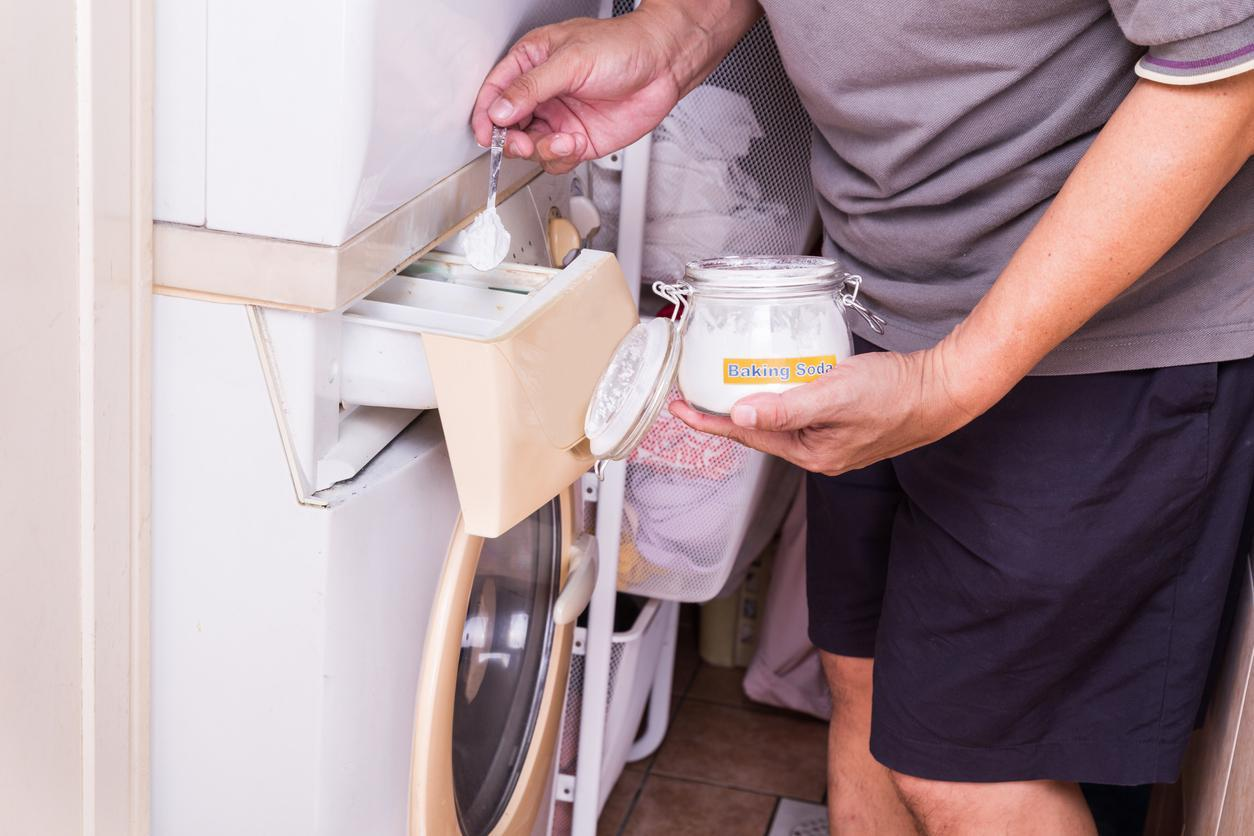
If your washing machine is a top- or front-loading, the instructions will be slightly different.
For a front-load washing machine, fill the detergent dispenser drawer with 1 liter of white vinegar and the softener dispenser with 1/2 cup of baking soda, then start the wash cycle.
If you're using a top-loading washing machine, start the water running for a few minutes before adding the distilled white vinegar. After 1 minute of agitation, turn off the machine and let the ingredients soak for an additional hour. After the washing cycle is finished, add half a cup of baking soda to the rinse water.
Baking soda and vinegar will dissolve the limescale in your washer and leave it feeling fresh and clean. The combination of these two compounds is too mild to completely eradicate mold, which is the only drawback. If your washing machine is dirty from washing soiled clothes, you will need to use more powerful cleaning agents.
Alternative cleaning ingredients to clean a washing machine
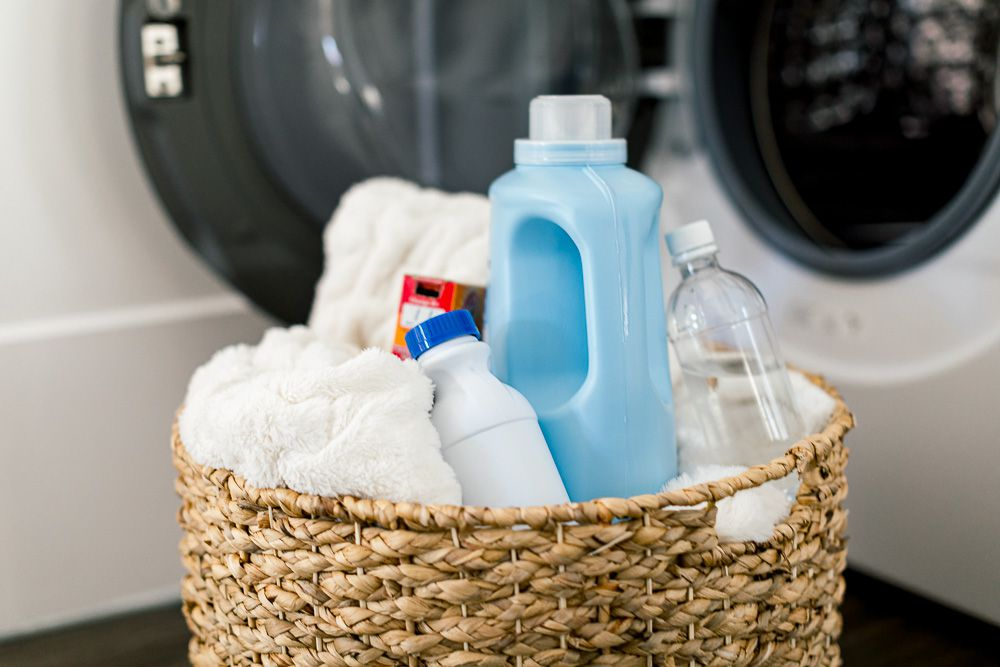
Enzyme detergent and oxygen bleach
Cleaning your washing machine has never been easier than using enzyme detergent and oxygen bleach.
Powdered enzyme detergent with the highest concentration of grease-eating enzymes is what you should be looking for instead of liquid detergent. Put the water temperature at 90 degrees and combine the two.
Citric acid powder
Soap scum, limescale, odors, and any kind of buildup inside the washing machine can be easily removed using citric acid powder, a potent and all-natural cleaner.
Adjust the heat on the water heater to 90 degrees Celsius and combine one cup of citric acid powder with half a cup of baking soda.
Hydrogen peroxide
This chemical may effectively remove mould, limescale, germs, and viruses from a washing machine. To a long wash cycle with water at 90 degrees Celsius, add one liter of hydrogen peroxide. For optimal effects, immerse it for at least three hours.
For a front-loader washing machine, you'll need to repeat the cycle a few times.
Chlorine bleach
Chlorine bleach is the greatest cleaning solution for removing unpleasant washing machine smell. It must be used with cold or warm water no hotter than 40 degrees Celsius.
Use caution with chlorine bleach since it can seep through porous surfaces like the porcelain or plastic inner drums of your washing machine.
As with limescale, chlorine bleach is ineffective against mold.
4. Let the wash cycle finish and clean the exterior
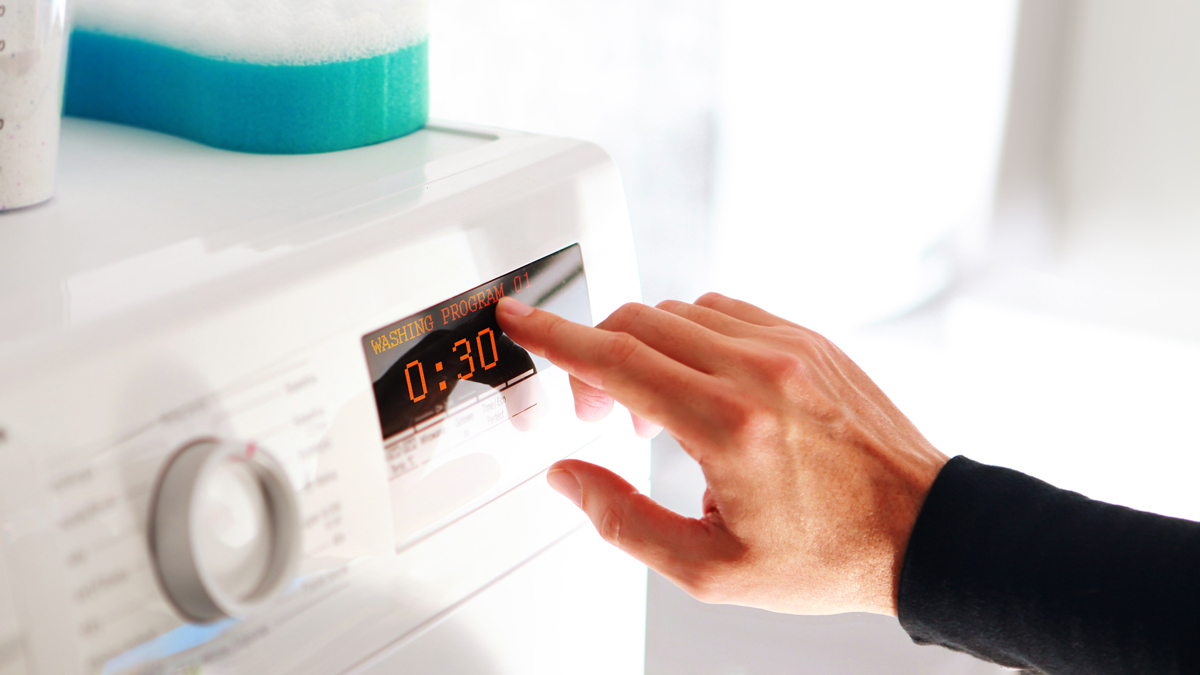
While the washing machine is running its normal cycle, you can clean the exterior with a vinegar-soaked towel. Thoroughly clean all the crevices.
Although sanitary concerns dictate that you should prioritize cleaning the machine from the inside out, we cannot overlook the exterior. When detergent, chemicals, or water are left on the body for too long, rust or corrosion can set in.
As the top of the washing machine is a common landing spot for filthy clothes, it should be cleaned regularly. For this, prepare a solution of equal parts white vinegar, baking soda, and water and wipe the outside down with it. Stains and dirt accumulation can also be removed in this way. If your model has knobs, you can use a toothbrush to access all the nooks and crannies.
5. Run a deodorizing cycle with baking soda
While the fizzing impact of vinegar and baking soda is fantastic at agitating stubborn deposits, the combination renders the deodorizing properties of the baking soda useless. That's why it's recommended to run a cycle with warm water and ordinary baking soda after cleaning the washing machine to get rid of odor-causing germs and dirt.
Pour 2 cups of baking soda into the hot water and stir. The ingredients need to sit together for half an hour. The cycle must complete its full round.
6. Run a hot water cycle
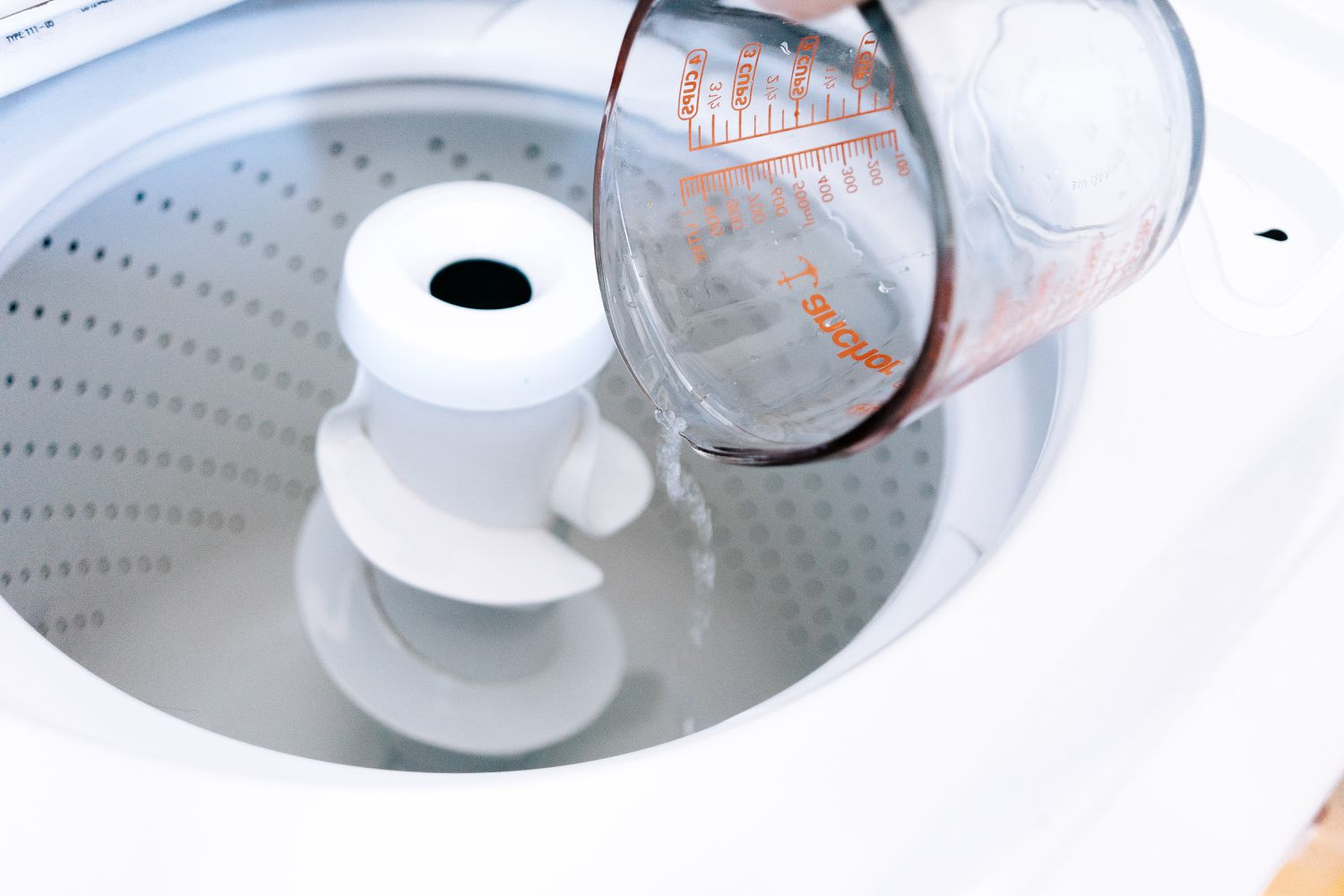
Restart the cycle but this time with only hot water. If there is any residue remaining after the initial wash, a little vinegar won't hurt.
Keep the washing machine door open after the second cycle is complete to let the drum dry and prevent mold and mildew growth.
7. Clean the tub rims
If your washing machine has a top-loading model, you can clean the space between the top borders and the tub rim using a towel dipped in white vinegar or hydrogen peroxide. Be sure to reach those inaccessible spots.
8. Clean the detergent drawer
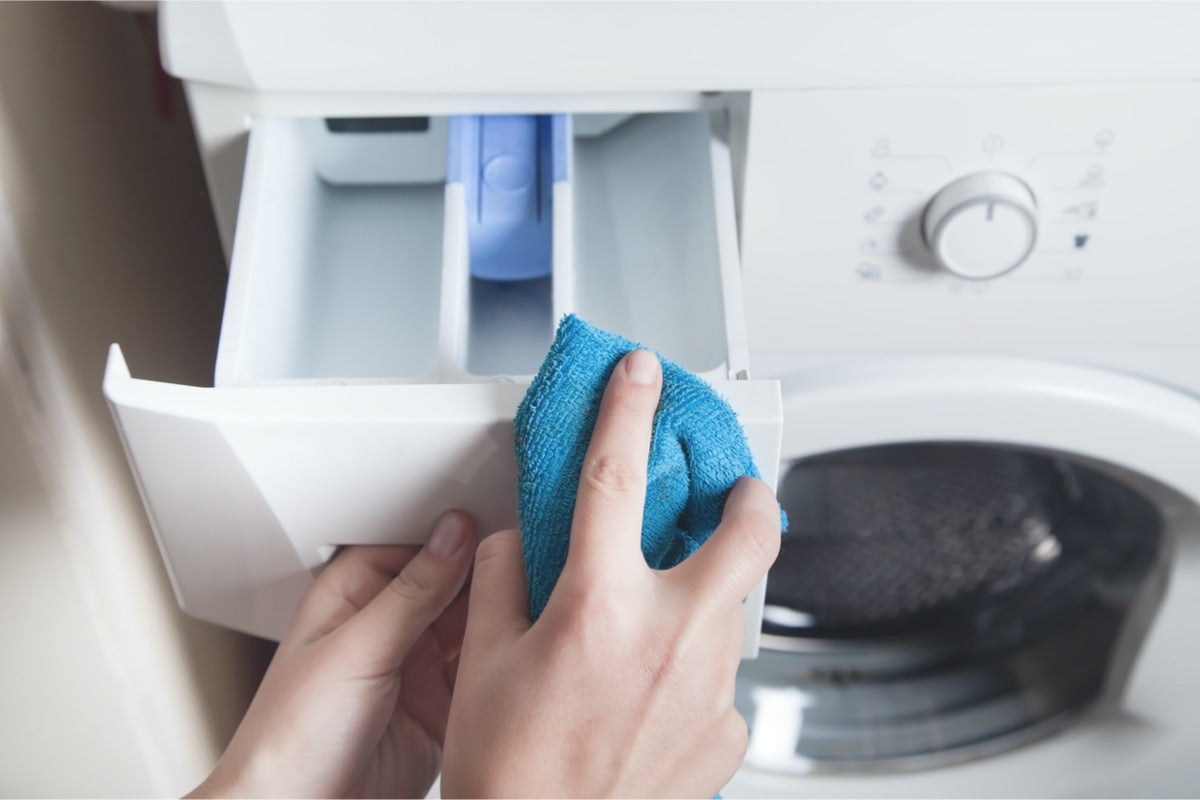
Take out the detergent drawer of your front-loading washing machine and fill it with hot water and a half cup of vinegar. To get rid of any residue or mold, use a toothbrush.
Before replacing the detergent dispenser, give it a quick rinse and dry it off with a clean cloth. Keep in mind that the spot where you keep your detergent drawer might collect mold and residue and needs to be cleaned regularly.
If the dispenser is stuck and won't budge, consult the owner's manual for further instructions. If it's stuck, you can try to remove it with a pipe cleaner or an old toothbrush.
9. Clean the washing machine filter
Bad washing machine smell can be eliminated by cleaning the washing machine's drum and other components, but the filter must also be regularly cleaned to ensure the washing machine continues to function properly.
The filter washer door will be located at the bottom and front of a front-loading washing machine. The filter for a top-loading washer can be found in the fabric softener dispenser.
To catch the water that drains from the front-loading washer's filter, slide a damp cloth beneath the door and set a small dish on top. Turn the filter cap counterclockwise and pour the water into the basin. Use a toothbrush and soapy water to scrub the filter clean of any residue.
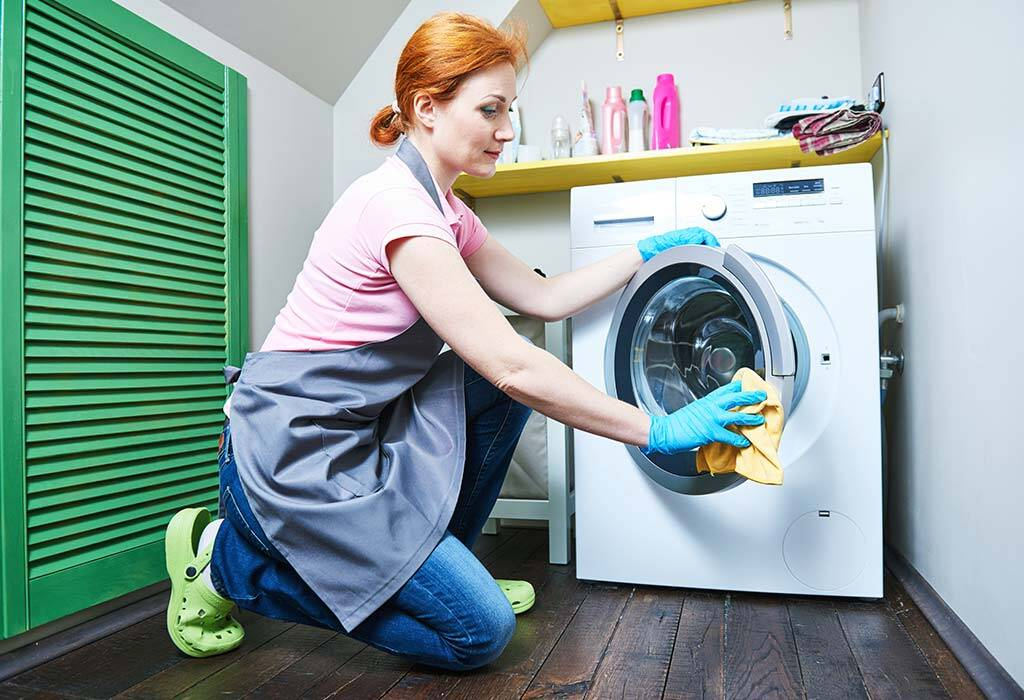
Get Your Washing Machine Working like New Again!
So there you have it— easy steps for cleaning your washing machine regularly from the inside and outside. Now you can use your washer confidently and know that all your clothes, sheets, and towels will be clean and fresh.
Whether a top-loading washing machine or a front-loading machine, we hope these tips and tricks will help you keep all your clothes looking new.
And remember, if you need more guides on your laundry cleaning routine, feel free to check our ultimate laundry cleaning guide to make your washing area sparkle and shine.
FAQs
What causes mould and mildew to grow in your washing machine?
Front-loading washing machines are more susceptible to mildew growth because of their design. Water is prevented from escaping using the curbed rubber gasket found in each unit's watertight doors. Particularly in inaccessible crevices, here is where grime, soap scum, and surplus moisture accumulate and provide ideal conditions for the growth of bacteria.
Top-loading washing machines, on the other hand, have a metal door that isn't very tight-fitting, so the tank may dry out very quickly in between uses.
Should you leave your washing machine door open between washes?
Leaving the door open after each load will prevent mould and mildew from growing within the machine, which can happen if moisture isn't allowed to escape.
Similarly, if you don't want your clean clothes to start smelling musty, you should take them out of the washing machine as soon as they're done.
Is bleach or vinegar better to clean the washing machine?
Bleach may be the most effective substance for sanitizing laundry, which is great news if you like using it. White vinegar has strong deodorizing and bacteria-killing qualities, making it a viable alternative to bleach if you'd rather not use bleach to avoid its harsh chemicals.
Will baking soda and vinegar damage the washing machine?
The washing machine should be safe for use with vinegar and baking soda in moderate amounts. However, excessive use can damage the coatings on the drive shaft components that change the cycle from agitate to spin.
How often do you need to clean your washing machines?
Bacteria can become stuck in the film left behind by chemicals and laundry detergent, which is a perfect breeding ground for mold and mildew, eventually making its way into the machine's inner workings and preventing water from flowing freely. Another drawback is that your laundry won't be very clean and will have an odd odor because your detergent won't be able to perform its job. In addition, allergens may be triggered by bacteria that are already present in the fabric.
It is why experts recommend running a cleaning cycle through your washing machine one a week or twice a week, depending on how often you use it. Wash it inside and out once a month if you're not using it that regularly.
